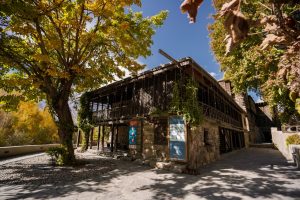
Darbar Mahal, A Great Marvel of History
October 26, 2021
Minar e Pakistan, Tower of Pakistan
October 26, 2021
Northern areas of Pakistan are blessed with excessive natural beauty, the mystical legacy of culture and history, sparkling river and lakes, mesmerizing valleys, and lush green forest. Shigar Fort is another great architecture that lies in the northern region of Pakistan, in the town of Shigar. Shigar Fort is locally known as Fong Khar, which means the palace of rocks. It was constructed by the 20th ruler of the Amacha Dynasty, Raja Hassan Khan in the 17th century. Shigar was ruled by the Amacha Family for almost 33 generations, with origins in the “Hamacha” tribe of Ganesh, Hunza. In the 11th century when the Hamcha tribe was massacred in Hunza Valley, few of its individuals managed to escape to Shigar over the Hispar Glacial Pass, where they came into power and formed their dynasty in the 13th century.
This fort is the last structure associated with the Amacha Dynasty. Khar e Dong is the oldest among them whose ruins can still be seen high up on the cliffs overlooking the present site. After some peaceful years, the rule of Raja Hassan Khan was overturned and Khar e Dong was captured and destroyed by the Mughal army sent by Mughal Emperor, Shah Jahan. The demolition of Khar-e-Dong necessitated the construction of the present Fong-Khar.
The Amacha ruler, Raja Hassan Khan brought a large number of carpenters, artisans, stone carvers, goldsmiths, and textile weavers from Kashmir to build this fort. This resulted in beautiful Kashmiri influenced carvings along with Baltit architecture. The unique design and features make the Shigar Fort a significant historical and architectural treasure.
The fort has been restored by Agha Khan Cultural Services Pakistan (AKCSP-P) and converted into a museum and luxury hotel, Serena. The restoration of the fort began in 1999 and continued till 2004 that cost approximately US$1.4 million.
The fort is encircled by beautiful lush green orchards and lawns, where people can find delicious fruits. There are several small water channels with a soothing sound traverse the lawn The original aesthetics of the fort is still preserved and open for the public whereas part of the museum with relics from the era gone by.
